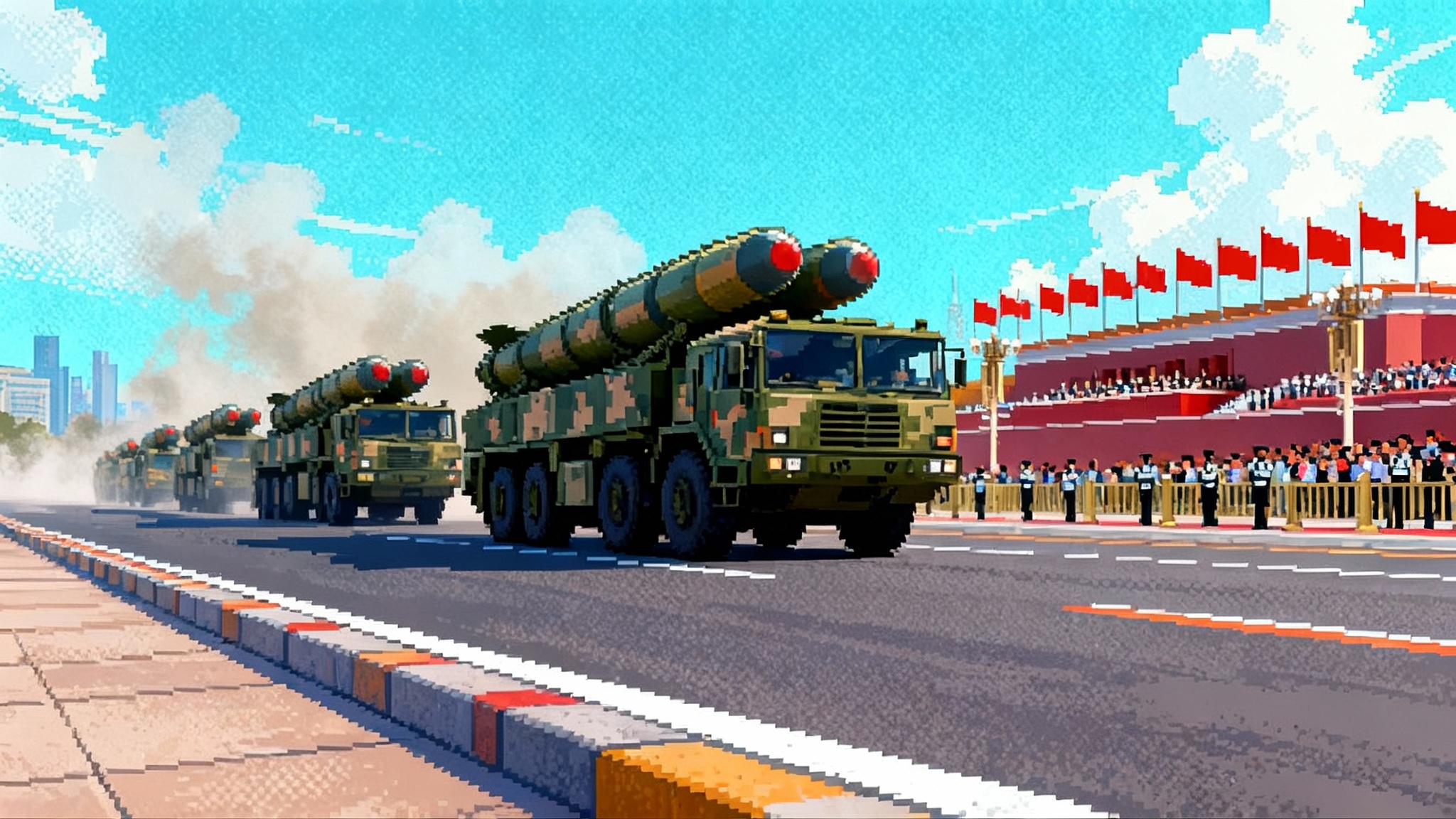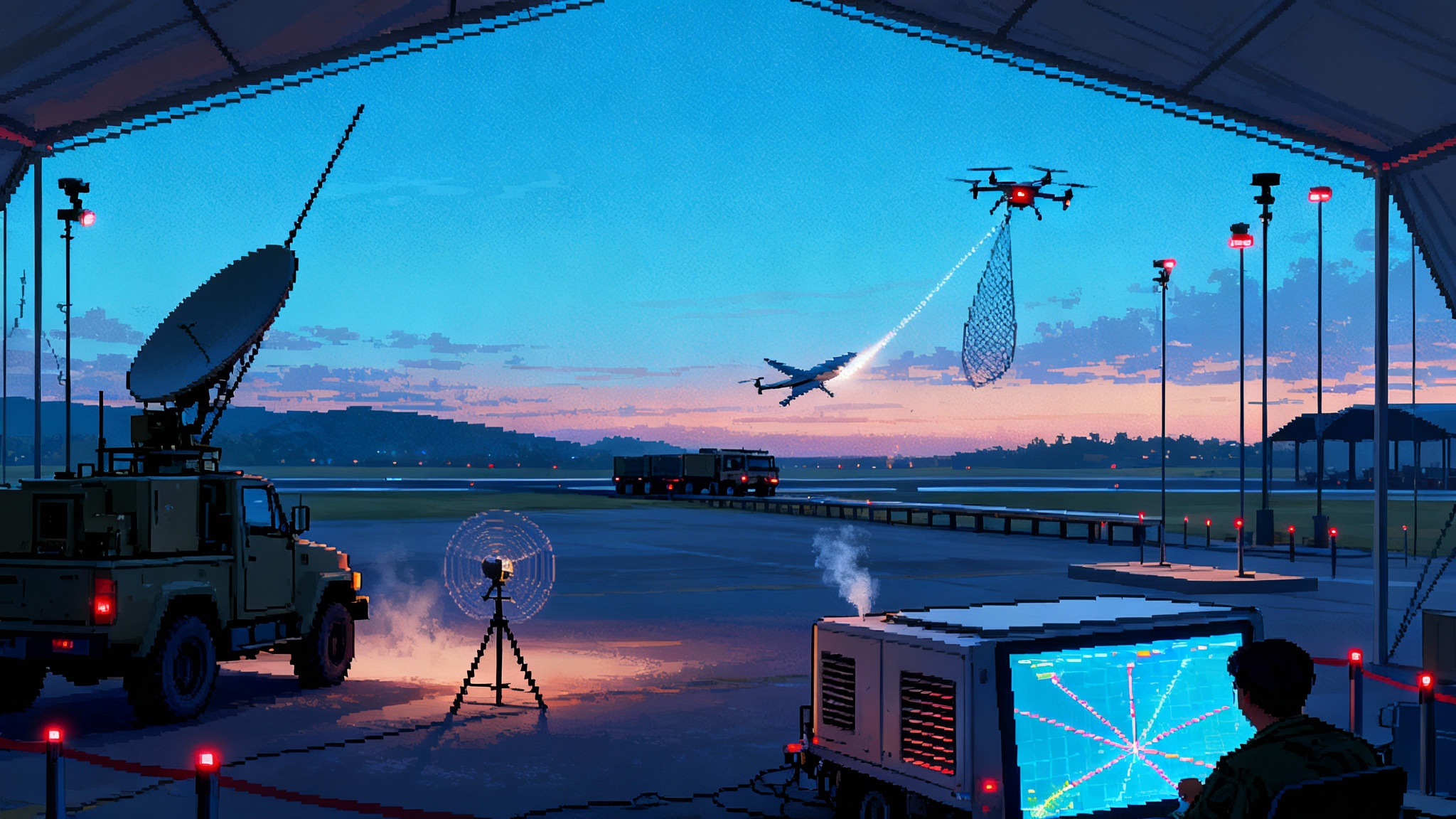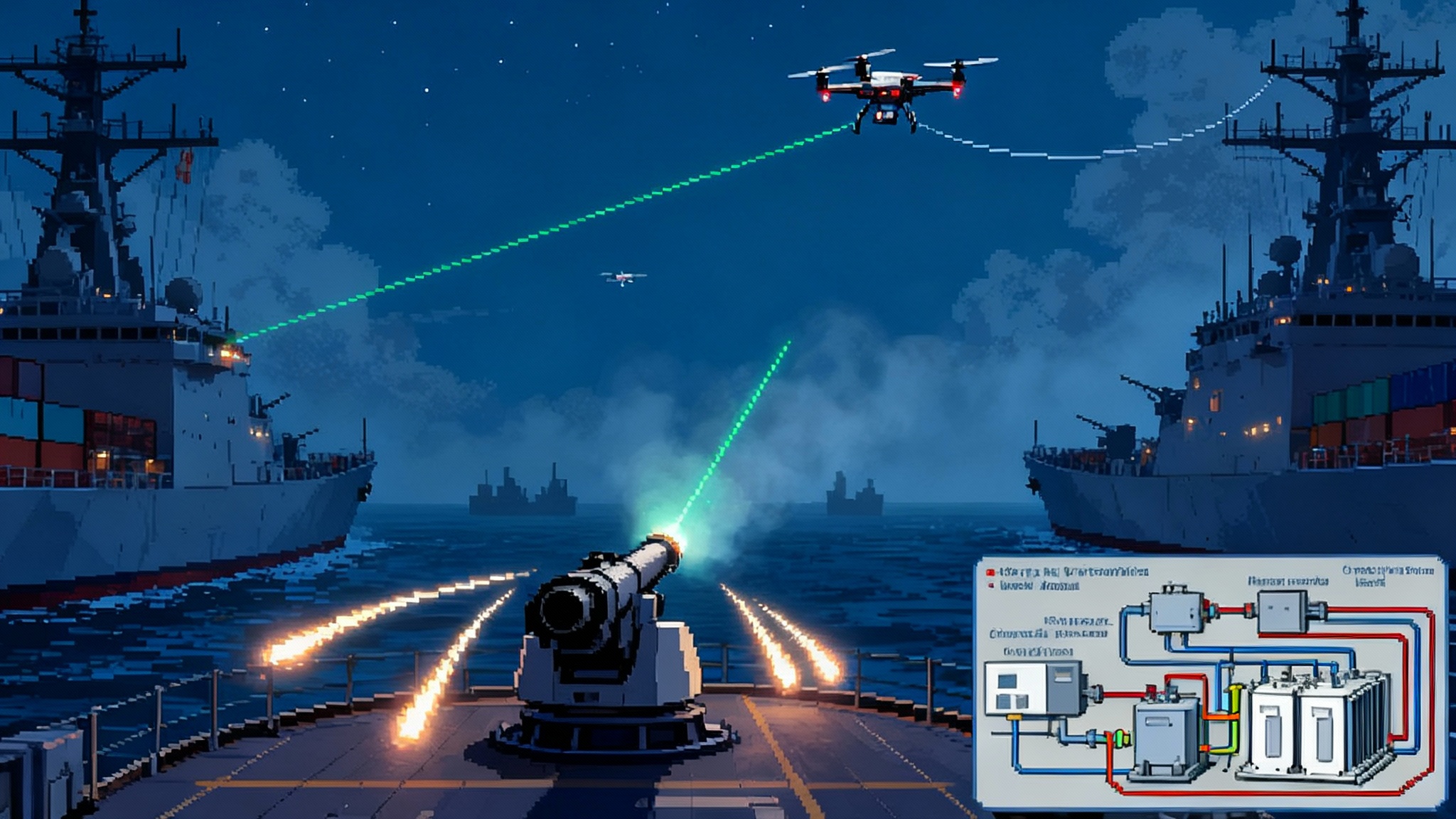Iron Beam goes operational, and air defense economics flip
Israel says its Iron Beam laser will enter IDF service by the end of 2025, the first high‑power combat laser to reach operational maturity. Near‑zero cost per shot and deep magazines could reshape drone and rocket defense worldwide.

The moment lasers cross the operational threshold
After decades of PowerPoint futures and lab demos, high‑energy lasers just crossed into the real world. In mid‑September 2025 Israel announced that Iron Beam, its ground‑based laser air‑defense system co‑developed by Rafael and Elbit, completed its final test campaign and is slated to enter IDF service before year’s end. Reuters reported operational readiness on September 17, citing weeks of intercepts against rockets, mortars, UAVs and even aircraft targets in southern Israel. Importantly, the ministry framed it not as a science project but as a complementary layer inside Israel’s existing air‑defense stack. For more on the economics and timeline, see Iron Beam cost per shot and our Iron Beam goes live analysis.
This is the first time a high‑power laser designed for real intercepts has reached operational maturity. Lower‑power dazzlers, counter‑sensor lasers and short‑range prototypes have deployed before. What makes Iron Beam different is the combination of power levels, beam control and integration into an established command network that already fights barrages in complex weather, clutter and jamming. The implications go beyond Israel. If lasers can remove the economic advantage that small rockets and cheap drones enjoy today, the logic of saturation attacks changes everywhere.
The math that changes the fight
Air defense has been losing the cost exchange. A 500 dollar hobby drone can force a 50,000 dollar interceptor shot, or at least a precious round from a finite magazine. That asymmetry lets attackers scale cheaply while defenders burn money and inventory. A laser flips that equation.
- Cost per shot. The variable cost of a laser engagement is electrical power. That is grid power or generator fuel, plus routine maintenance. Whether you estimate a few dollars or a few tens of dollars per engagement, it is orders of magnitude below a Tamir or Stunner interceptor. The capital expense of the laser unit is not trivial, but once fielded, the marginal cost to fire again is close to zero.
- Deep magazines. A laser does not reload. As long as it has power and thermal headroom, it keeps shooting. Magazine depth now depends on power generation and cooling, not on the number of launch tubes in a battery.
- Response time. Lasers put energy on target at light speed, so the engagement delay is slew, track and dwell time. That favors threats with small cross‑section and short flight times, exactly the space where interceptors are stressed today.
Economics do not magically make physics go away. Atmospheric absorption, turbulence and obscurants reduce effective range and burn rate. Dwell time limits the number of targets you can process per minute. Power and cooling dictate sustained fire. But the key shift is that defenders can now spend dollars on electrons rather than on exquisite missiles for low‑end threats. That lets commanders reserve expensive kinetic rounds for the leakers that matter most.
Where Iron Beam fits in Israel’s layered defense
Israel already fields a tiered architecture: Iron Dome against rockets and some drones, David’s Sling against larger missiles and cruise threats, and Arrow for high‑altitude ballistic missiles. Iron Beam slides in at the short‑range, high‑volume end of that stack. Think of it as the first filter for cheap and plentiful targets.
- Mission set. Rockets, mortars, small fixed‑wing drones and quadcopters are prime candidates. The laser is ideal for fragile airframes, exposed propellers and thin‑skinned rocket bodies during boost or mid‑course.
- Shot doctrine. The fire control system can allocate lasers first against targets that are inexpensive to kill with heat, while Iron Dome keeps its magazine for smarter munitions or for bad‑weather windows. If a target survives laser dwell or weather cuts the beam, the system can pass the track to a kinetic interceptor. That is a classic mixed‑effects engagement, and it is how the stack gains resilience.
- Command and control. The IDF intends to integrate Iron Beam into the same radar network and battle management tools that already coordinate interceptors. That matters more than any headline power rating. When a thousand tracks light up, the node that can sort, prioritize and hand off efficiently is the node that wins.
If the laser routinely offloads half or more of the low‑end shots, the value is immediate. Every Tamir not fired is one you still have when the weather turns or the launcher goes down. Every launcher not spent on a 400 dollar drone is one more available for a maneuvering cruise missile.
What early testing says, and the fine print
Israel’s final test series established that the beam director, tracking and adaptive optics can hold energy on real targets in realistic conditions. That is the hard part engineers have chased for years. Still, the fine print matters.
- Weather and obscurants. Fog, low cloud, rain, dust storms, wildfire smoke and deliberate smoke pots scatter and absorb energy. In those conditions, effective range shrinks and dwell time increases. Attackers will pay attention to the weather report.
- Dwell and throughput. Lasers are not instantaneous kills. You must hold the beam on a point long enough to buckle a spar, pop a warhead casing or fry flight controls. In a dense salvo you are time‑sharing the beam. That is why pairing with interceptors and guns is not optional.
- Line of sight. Terrain masks and urban canyons create blind spots. The answer is more nodes, higher masts and integration with other air‑defense sensors.
- Power and cooling. The magazine is only as deep as your generators and chillers allow. Expect future iterations to integrate hybrid batteries, grid ties and smarter thermal management to keep duty cycles high.
None of this undermines the value. It defines the playbook for commanders and for adversaries who will probe the edges.
Export paths and who will want it
Follow the threat map and the buyer list writes itself. Countries that face daily UAV and rocket harassment, or that worry about barrages of small cruise missiles, will kick the tires first. Gulf states with critical energy infrastructure, Eastern European front‑line states and island nations protecting ports and runways are early candidates. The United States is already a special case. Lockheed Martin has partnered with Rafael on a U.S.‑market variant, a path that lowers export friction and enables American funding lines, manufacturing capacity and integration with U.S. command systems.
For exportability, two questions dominate. First, how well does the system plug into the customer’s air picture and rules of engagement. Second, what level of tech release Israel is comfortable with. Expect an initial wave of government‑to‑government sales where Israel retains some sensitive elements, while partners license‑produce power modules and beam directors locally. The logic mirrors the Iron Dome export model, but with stricter controls around laser safety and beam control software.
Signal to the United States and NATO
Iron Beam’s milestone lands in the middle of a broader Western push on directed energy. The U.S. Navy has been testing its shipboard HELIOS laser and integrating it with Aegis. In 2024 a Navy destroyer engaged a drone with HELIOS during a test event, and those trials continued into 2025. Defense News reported HELIOS test details drawn from the Director, Operational Test and Evaluation. For NATO land forces the near‑term impact is clearest in short‑range air defense. European armies rebuilt SHORAD capacity after years of neglect, but they still live under magazine constraints. A truck‑mounted laser that shreds quadcopters and cheap one‑way drones for pocket change, while cuing gun and missile batteries to the leakers, would change how commanders posture around logistics hubs and bridges. See how this trend is shaping doctrine in NATO bets on drone‑on‑drone defense.
The immediate signal to U.S. and NATO programs is not to replace interceptors. It is to integrate lasers as a first‑layer effector, standardized in the kill chain with the same doctrine as guns and missiles. That means common interfaces for engagement orders and track quality, shared safety rules for beam propagation and training pipelines that teach operators how to choose the cheapest shot that works under the current weather. It also puts pressure on power generation and thermal management on vehicles and ships. Expect more hybrid power packs and trailerable generator chasses tied into laser batteries.
Expect countermeasures, and fast
Adversaries will adapt quickly, and many countermeasures are cheap.
- Weather masking. Attacks will concentrate in fog, rain and dust. Expect more smokes, aerosol generators and fire‑setters attempting to build ad hoc obscuration.
- Decoys and clutter. Foam gliders, mylar balloons and very small drones can soak up beam time for pennies. Saturation attacks will mix expensive payloads with junk that looks worthy enough to shoot.
- Hardening and kinematics. Reflective or ablative coatings, spinning airframes and tumbling trajectories increase dwell time. Faster crossing angles and higher‑G maneuvers reduce the time a beam can stick.
- Tactics. Attackers will aim for angles that exploit terrain masking. They will also stress power and cooling by forcing long periods of sustained fire.
Defenders will counter the countermeasures. Thermal auto‑trackers can favor aim points that shed coatings quickly. Fused sensors can separate decoys by kinematics and radar cross‑section. Kill boxes can route junk to guns and save the beam for targets that warrant it. The side that iterates doctrine faster will get more value from the same physics.
Procurement and doctrine outlook, 2026 to 2030
The big picture is clear. Lasers are moving from demo to deployment, not as silver bullets but as economic equalizers. Here is how that is likely to play out through the end of the decade.
- Israel. The IDF fields initial Iron Beam units in 2025 and spends 2026 refining TTPs in mixed batteries with Iron Dome. By 2027, production ramps and the air‑defense command allocates lasers to corridors with predictable small‑UAV and rocket traffic. Expect at least one export contract to a closely aligned partner signed by 2027, with deliveries from 2028 after integration and training.
- United States. The Navy continues HELIOS testing and decides whether to backfit several Flight IIA destroyers as a limited objective capability. On land, Army SHORAD lasers mature in parallel, with the first battalion‑level fielding of a high‑energy laser variant to protect fixed sites and depots by 2027 or 2028. Joint experiments focus on common engagement management so that laser, gun and missile units can share fire control and shot assignment.
- Europe. The United Kingdom, Germany and Italy push their own laser demonstrators toward limited operational capability around 2027. NATO air bases and key logistics nodes get mixed‑effector defenses that include at least one laser system per sector. Expect pooled procurement frameworks so smaller nations can buy common modules and share sustainment.
- Gulf and Indo‑Pacific partners. Energy infrastructure protection drives early buys. Lasers pair with counter‑UAS radars and electro‑optics to create rings around refineries and LNG terminals. Island nations experiment with runway protection packages that combine laser, guns and nets for attritable drone threats.
Doctrinal changes will be just as important as hardware.
- Shot‑cost discipline becomes a formal rule. Operators are trained to pick the cheapest effective effector first, with weather and dwell time as gating criteria. Commanders measure performance in dollars per defended engagement, not only in probability of kill.
- Power and cooling become part of force design. Batteries are organized with organic generators and thermal trailers. On ships, laser duty cycles tie directly to energy management plans during high‑tempo operations.
- Mixed batteries become standard. A typical defended site at the end of the decade has one laser unit for cheap targets, one gun system for clutter and leakers, and a launcher of interceptors for the threats that matter most. The brain of the system decides sequencing in milliseconds.
- Safety and deconfliction mature. Rules of fire account for eye safety, aircraft deconfliction and reflections. Expect standard no‑fire volumes over civilian areas and automated shutters when conditions degrade.
By 2030, if current timelines hold, lasers will be as unremarkable on the battlefield as counter‑battery radars are today. They will not replace missiles or guns, but they will ensure that missiles and guns are saved for the targets that justify them. In a world of attritable drones and cheap rockets, that is victory.
What to watch next
- Weather performance data from the first operational months. How often does weather deny shots, and how do batteries backfill with interceptors.
- Sustained fire metrics. Duty cycle, mean time between maintenance and how quickly crews can swap power and cooling modules.
- Integration success. Do the laser nodes plug and play inside national air‑defense networks, or do they require bespoke connectors and workarounds.
- Export mechanics. Which elements are exportable, and which stay under tight control. Follow the joint industrial moves that signal local production.
- Adversary adaptation. Expect smoke, decoys and timing games. The faster the defender iterates doctrine, the longer the laser keeps its edge.
Israel’s announcement is not the end of interceptors, it is the end of accepting their cost curve as destiny. Lasers will not solve every problem, but they finally solve one of the most corrosive, the ability of cheap aerial threats to drain magazines and budgets. That is why mid‑September 2025 will be remembered as the week the economics of air defense changed.



